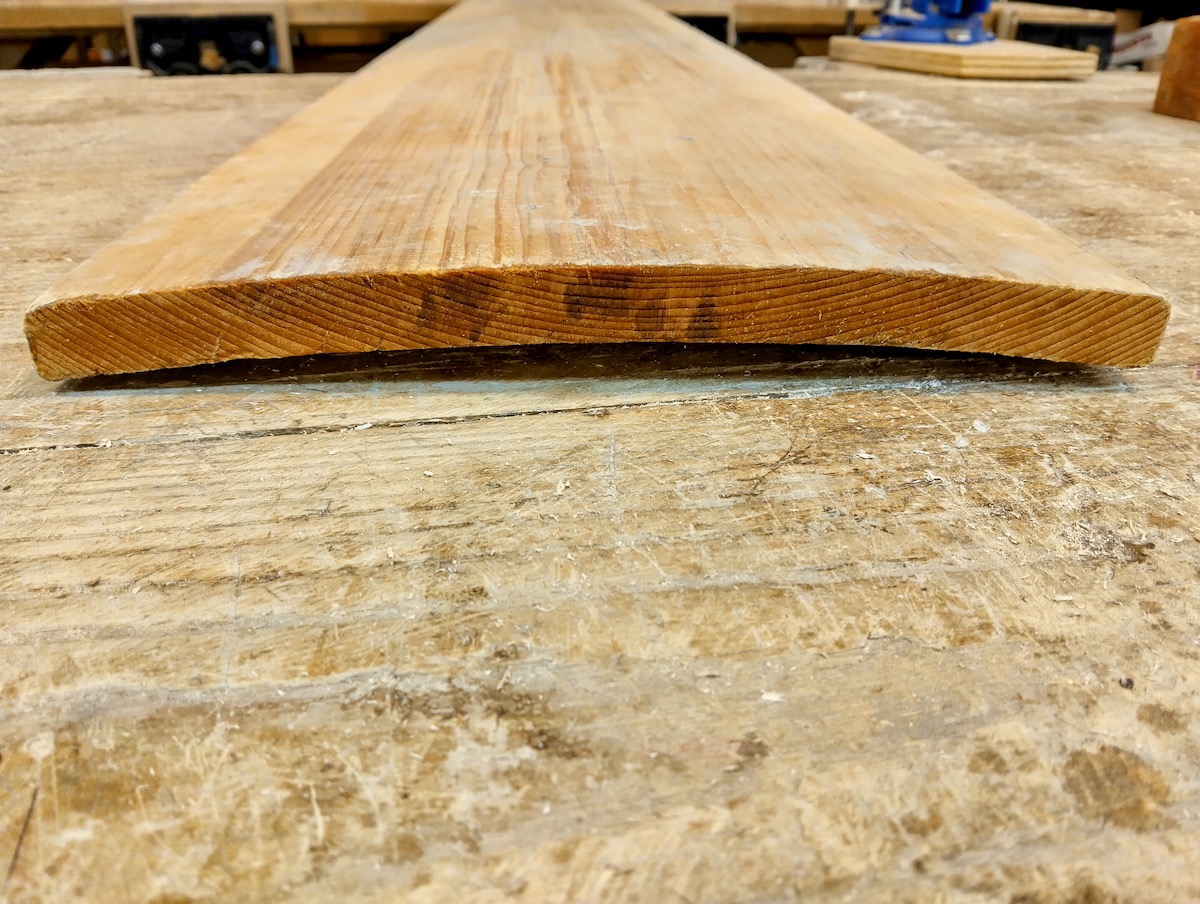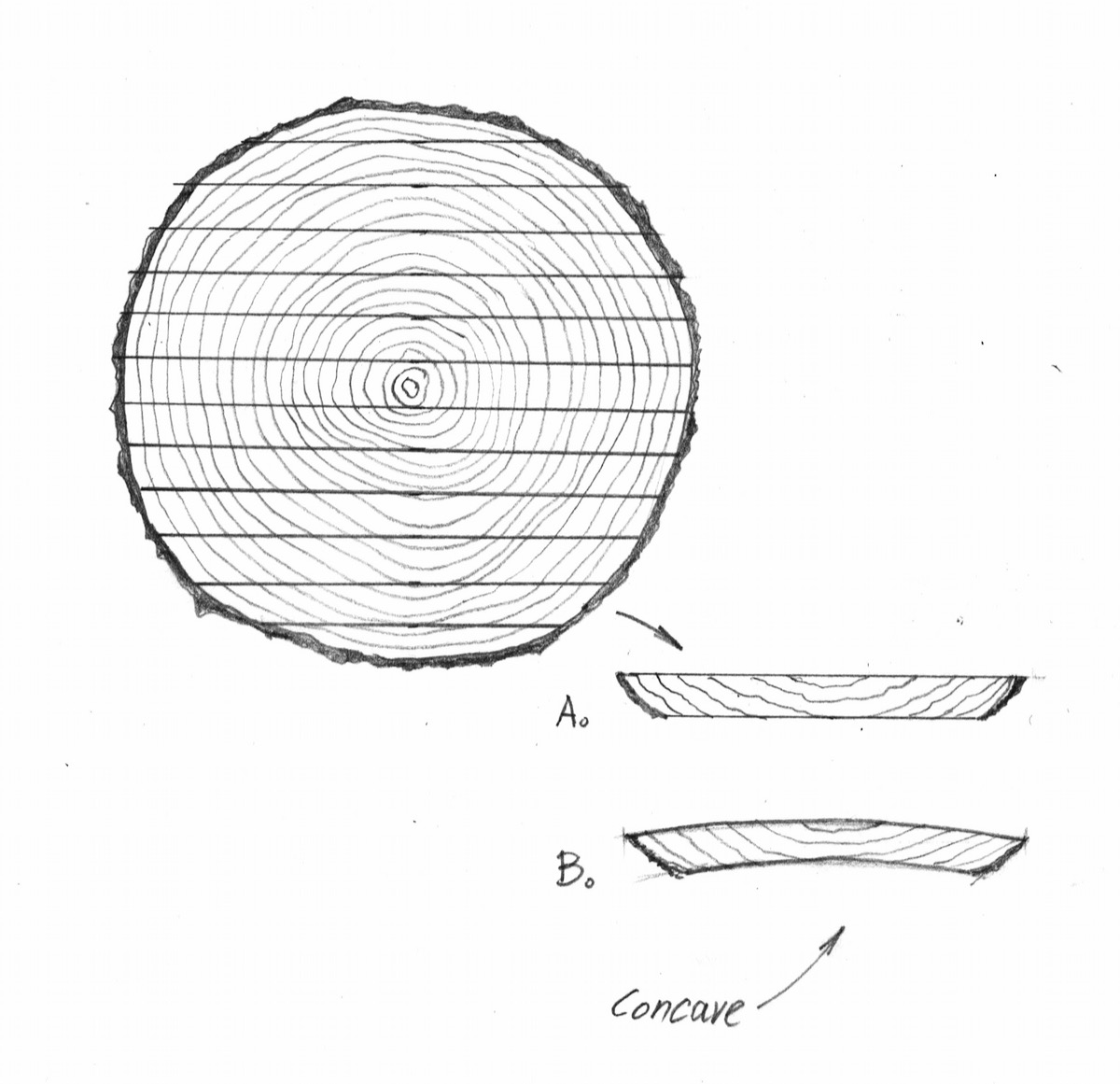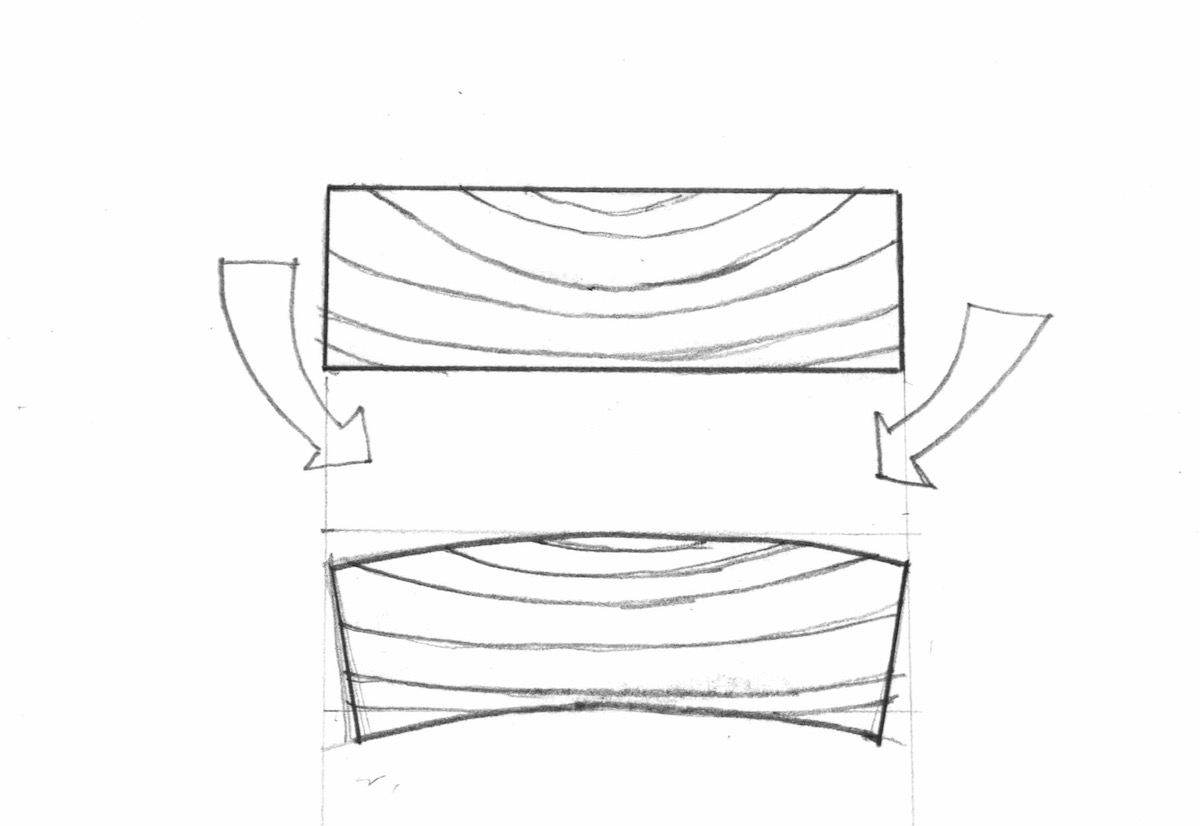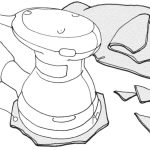We may receive a commission when you use our affiliate links. However, this does not impact our recommendations.
Getting to know the what and why of cupping lumber.
In our 1960s house, many of the old-fashioned closet shelves were crafted from solid carpentry-grade softwood. It appears that the lumber for these shelves was never kiln-dried and was roughly cut by the carpenter to fit inside the closets. Left initially unfinished, the shelves were later painted with oil or latex paint by previous owners. Over time, the shelves dried out, resulting in a noticeable cupping or vault-like shape.

As woodworkers, we’ve all encountered cupped boards stacked at lumber yards, big box stores, and in our own shops. Wood can develop a concave shape as moisture escapes from the fibers and cells into the drier surrounding air. The dry environment of our shops and homes accelerates this water migration, especially with carpentry-grade or air-dried lumber.
Cupping is a significant issue, primarily affecting plain-sawn boards. Plain-sawn, or flat-sawn wood, is the most common and affordable lumber sawing technique. In this method, a tree trunk is sliced into sequential parallel planes to produce boards that widen toward the middle of the log. These boards often display characteristic parabolic or cathedral patterns on their surface, with their crosscut revealing a stack of arches or curvatures.
Consider the cross-section of a plain-sawn board (A). As moisture evaporates during the drying process, cupping occurs across the board’s width, forming a concave geometry facing the bark (B).

In (A), a board with higher moisture content displays steeper arches. As the boards dry (B), the arches (segments of the annual rings) gradually flatten out, exerting pressure on the board’s corners and causing it to cup.
To help my students understand and identify the potential for cupping in a particular plank, I encourage them to examine the cross-section of the plain sawn board and locate the annual rings’ arches. I then prompt them to envision these arches attempting to flatten out, exerting forces that cause the board to cup.

While researching this topic, I came across several informative videos on YouTube that delve into this phenomenon. Below is one of the best ones I found, from Wood Workers Shop Limited.
In my next post, I’ll share some strategies for reforming cupped boards or preventing new pieces of solid wood furniture from cupping in the future.
Here are some supplies and tools we find essential in our everyday work around the shop. We may receive a commission from sales referred by our links; however, we have carefully selected these products for their usefulness and quality.








